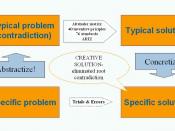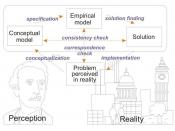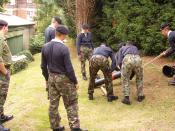1.What are the 3 stages of memory? Explain each.
Stage 1: Encoding: is a process of acquiring information.
Stage 2: Storage: occurs when information is stored.
Stage 3: Retrieval: is the process of getting at and using information held in storage.
2.What are the 5 learning styles? Briefly explain each in complete sentences.
Part One-Social or Independent Learners: Social learners tend to be people-oriented and enjoy personal interaction. Independent learners prefer to work and study alone.
Part Two-Spatial or Verbal Learners: Spatial learners are able to visualize or mentally see how things work or how they are positioned in space. Verbal learners tend to rely on verbal or language skills.
Part Three-Applied or Conceptual Learners: Applied learners prefer tasks that involve real objects and situations. Conceptual learners prefer to work with language and ideas.
Part Four-Auditory or Visual Learners: Auditory learners tend to learn more effectively through listening.
Visual learners process information by seeing it in print or other visual modes.
Part Five-Creative or Pragmatic Learners: Creative learners are imaginative and innovative. They prefer to learn through discovery or experimentation.
Pragmatic learners are practical, logical, and systematic. They seek order and are comfortable following rules.
3.What is the 6-step approach to problem solving? Describe each.
Step 1: Specify the Problem. State the problem, Specify the problem in a way that allows you to solve it successfully, Express the problem verbally or in writing, Focus on language.
Step 2: Analyze the Problem. Seek other perspectives, Be flexible in your analysis, Consider various strands of impact, Brainstorm about all possibilities and implications, Research problems for which you lack complete information.
Step 3: Formulate Possible Solution Paths. Try to think of all possible solutions, Be creative, Consider similar problems and how you have solved them.
Step 4: Evaluate Possible...



Good but very precise
this is a good essay but lack of information
0 out of 0 people found this comment useful.